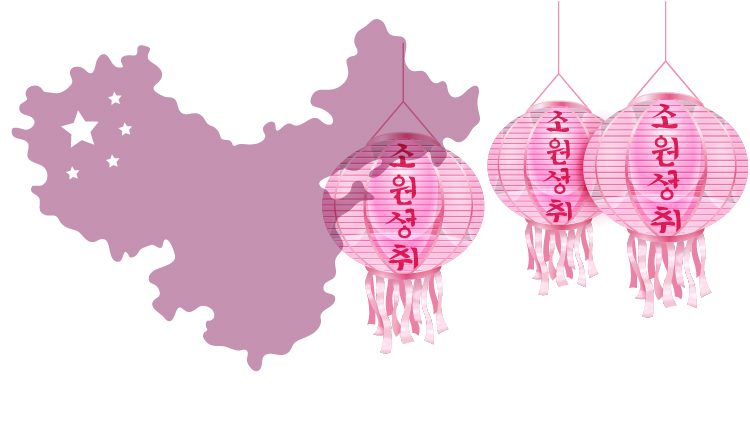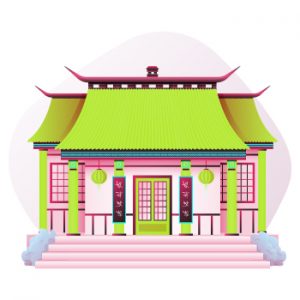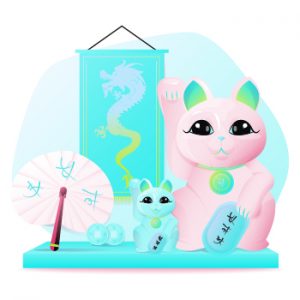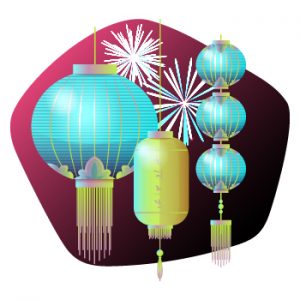
Do You Know Difference Between Simplified & Traditional Chinese?
Chinese Writing Translation
Chinese is one of the most complex languages in the family of languages. If you’re a new Chinese language learner or planning to learn in the future, you’ve likely noticed that there are two distinct styles of writing: simplified and traditional. We’re going to look at both of these in this article. But by the end, you should have an answer to the question above and a better understanding of these different forms of Chinese writing. So what are they? And how do you choose which one to use? We’ll talk about in this article on Chinese writing translations: use simplified or traditional?
Chinese script
If you want to go into Chinese language translation, it’s essential to know that there are two different official writing systems: traditional and simplified Chinese. While some Chinese characters have been changed from their original forms, these scripts are still quite different.
If you’re an aspiring Chinese translator or interpreter or want to join Chinese translation services, be sure to brush up on your knowledge of these two written languages for your translation project. Like document translation, you have to provide precise and accurate language services.
Chinese characters have five major styles: Seal script, Clerical script, Semi-cursive and cursive version of the script; standard script, Edomoji, Munjado, and Huaya. Variant characters include simplified Chinese, traditional version of Chinese, pinyin, Kanji, Hepburn, Korean, Hanja; Revised Romanization are characters that are homophones and synonyms.
Mandarin Chinese is a dialect of Chinese. Mandarin is one of the Chinese dialects alongside Shanghainese, Cantonese speakers, and many more.
The ancient history of the Chinese language: Chinese is undoubtedly a language with ancient forms. Archaic characters of Chinese (14th century to 11th century B.C.), Traditional Chinese (Wenli – 11th century BC to 8th cent A.D.), and Modern Chinese prevail today.
Cantonese, historically the language of most Chinese immigrants, was the third most widely spoken language by non-English speakers in the 19th century.

Historical Context of Chinese Script Evolution
The evolution of Chinese script is a testament to the rich cultural heritage of China. Traditional Chinese characters date back to ancient times, serving as the backbone of Chinese texts for centuries. The intricate characters reflect the complexity and depth of human language, embodying the essence of Chinese culture.
In the mid-20th century, simplified forms of Chinese characters were introduced to enhance literacy. The Chinese government undertook this cultural evolution to make reading and writing more accessible to modern humans. Simplified Chinese aimed to preserve the cultural heritage while adapting to contemporary needs.
Harvard University Press has published extensive research on the impact of this shift on Chinese society. The transition from traditional to simplified Chinese is not just a linguistic change but a significant cultural milestone. The simplification process underscores the dynamic nature of human language and its ability to adapt over time.
Impact of Simplified Chinese on Literacy
The introduction of simplified Chinese has had a profound impact on literacy rates in mainland China. By reducing the complexity of characters, it became easier for people to learn and use the language effectively. This change was crucial in promoting education and improving communication across the country.
According to studies published by Oxford University Press, the adoption of simplified forms significantly increased literacy rates. The simplified script allowed for faster learning and broader dissemination of information. As a result, more people could access education, contributing to social and economic development.
The Journal of Language Evolution highlights how this linguistic shift has facilitated greater access to Chinese texts and educational resources. Simplified Chinese has played a crucial role in bridging the gap between traditional cultural practices and the needs of modern humans. This transformation underscores the adaptability and resilience of human language.
Differences between simplified and traditional Chinese
Simplified Chinese has mostly replaced traditional Chinese (traditional forms) standard script in mainland China, Singapore, Malaysia, and overseas Chinese communities outside mainland China. Likewise, it is one of several official languages of Hong Kong (together with English) and Taiwan (alongside Taiwanese Hokkien).
It is still often used in informal contexts such as commercial signs or advertisements. The traditional version is the predominant dialect of the overseas Chinese-speaking communities of Hong Kong, Macau, Taiwan, and Southeast Asia, among many other Chinese speakers.
Whether in traditional form or modern type Chinese is spoken, is the official language in Hong Kong.
Cantonese speakers are found mainly in the Guangdong and Guangxi provinces in Southern China and until the 1997 British handover of Hong Kong to China, Cantonese was the official language of Hong Kong.
Learning Traditional vs. Simplified Chinese
For new learners, deciding whether to learn traditional or simplified Chinese can be challenging. Each script has its own advantages and cultural significance. Simplified Chinese is generally easier to learn due to its reduced complexity, making it more accessible for beginners.
Traditional Chinese, on the other hand, offers a deeper connection to Chinese culture and history. Learning traditional characters can provide a more comprehensive understanding of Chinese texts and literature. This script is rich in historical context, offering insights into the cultural evolution of China.
Cambridge University Press and Harvard University Press provide numerous resources for learners of both scripts. These institutions highlight the benefits of understanding both forms, especially for those interested in Chinese culture and language. Whether one chooses traditional or simplified Chinese, each script opens a window into the fascinating world of human language and cultural heritage.

How to tell which one you’re using
Chinese is not a language you can pick up by living in a country or studying it in school. Because it has variant forms and changed so much over thousands of years, variant characters are peculiar to one part of China, making translating into other languages challenging. It has different forms of character structure in writing.
When Chinese people wrote for their use, they used traditional characters (ancient forms/ancient variants). However, when trying to communicate with English speakers who didn’t know Chinese well, many began using simplified characters. If you want to learn Chinese, you should know that both kinds exist.
To tell which type of character set is being used, take a look at Chinese writing systems: If the entire character starts from left-to-right (like English), then that’s probably simplified Chinese; if it begins from right-to-left (like Arabic), then that’s perhaps traditional Chinese (ancient variant).

The importance of context
Chinese is a tonal language, which means a change in tone can completely alter how a character is pronounced. Some Chinese characters are even written differently depending on the context, so we can say there are variant characters like 秋 (autumn) being used as 冬 (winter) or 食 (eat) depending on the appearance of characters in a sentence. The Chinese character for rain is 雨, and the Chinese character for hair is 头发.
If they are still considered variant forms today, then these Chinese standard characters and words have no real meaning differences. Otherwise, they would be considered multiple orthodox words that mean different things.
Simplified Chinese characters are standard characters of Chinese prescribed in the Table of General Standard Chinese Characters for use in mainland China.
If you are writing text that needs to be spoken or read aloud, you’ll need to use traditional Chinese. But if your content will be read silently, try simplified Chinese instead! The characters are typically less complex in structure and more similar to how they appear in Romanized form.
Role of Chinese Characters in Modern Technology
The advent of modern technology has significantly influenced the use and learning of Chinese characters. Digital tools and online resources have made it easier to access and learn both traditional and simplified Chinese. This technological integration has played a vital role in the dissemination of Chinese texts globally.
Oxford University Press has explored how technology has impacted the learning and usage of Chinese scripts. With the help of digital platforms, learners can now practice writing, reading, and speaking Chinese more efficiently. These tools have bridged the gap between traditional learning methods and modern technological advancements.
The Journal of Language Evolution discusses how digitalization has preserved the cultural heritage of Chinese scripts. By making traditional and simplified characters accessible online, technology has ensured that these forms remain relevant in the modern world. This fusion of technology and language underscores the continuous cultural evolution of Chinese writing.


Preservation of Traditional Chinese Characters
While simplified Chinese has become prevalent, traditional Chinese characters continue to hold significant cultural value. They are still used extensively in Taiwan, Hong Kong, and among overseas Chinese communities. These characters represent the historical depth and cultural heritage of Chinese civilization.
Institutions like Cambridge University Press emphasize the importance of preserving traditional characters. They argue that these characters are not only a linguistic treasure but also a vital link to China’s rich historical and cultural past. Traditional Chinese characters are seen as an embodiment of China’s long-standing cultural evolution.
Chinese culture is deeply intertwined with its script, and maintaining traditional characters is crucial for preserving this heritage. Despite the widespread use of simplified forms, traditional characters remain a symbol of cultural identity and continuity. They are a testament to the enduring legacy of Chinese civilization.
Role of Chinese Characters in Calligraphy
Chinese calligraphy is a revered art form that utilizes the beauty and structure of Chinese characters. Both traditional and simplified Chinese characters are used in calligraphy, each bringing a unique aesthetic quality to the art. Calligraphy is not just a form of writing but a cultural expression deeply rooted in Chinese history.
Cambridge University Press has published works on the techniques and cultural significance of Chinese calligraphy. The fluidity and precision required in calligraphy reflect the broader principles of Chinese philosophy and aesthetics. This art form exemplifies the intricate relationship between language, art, and cultural identity.
Chinese culture places great importance on calligraphy, considering it a reflection of one’s moral and intellectual cultivation. The practice of calligraphy requires discipline, creativity, and a deep understanding of Chinese characters. This ancient art continues to be a vital part of China’s cultural evolution, cherished by both traditional and modern practitioners.
The Influence of Chinese Characters on Other Languages
Chinese characters have significantly influenced other East Asian languages, particularly Japanese and Korean. The adaptation of Chinese characters in these languages demonstrates the widespread cultural and linguistic impact of Chinese civilization. For instance, Japanese Kanji and Korean Hanja both have their roots in Chinese script.
Harvard University Press has explored the historical adoption and adaptation of Chinese characters in these languages. The integration of Chinese characters into Japanese and Korean writing systems is a fascinating example of cultural and linguistic exchange. These characters have been modified and repurposed to fit the phonetic and grammatical needs of each language.
This cultural heritage is still evident today, as modern humans in Japan and Korea continue to use characters derived from Chinese. The use of Kanji in Japan and Hanja in Korea showcases the enduring legacy of Chinese characters. These adaptations highlight the flexibility and influence of Chinese script across different human language systems.
Chinese Characters in Literature and Poetry
Chinese literature and poetry are rich with the use of traditional and simplified characters. The depth and beauty of Chinese writing are often best appreciated through its literary works, where characters are employed to convey profound emotions and complex ideas. Classical Chinese poetry, in particular, showcases the elegance of traditional characters.
Harvard University Press has published anthologies of Chinese literature that highlight the significance of characters in literary expression. Traditional Chinese characters are often used in poetry to create visual and phonetic harmony, enhancing the overall aesthetic experience. Simplified characters, while more straightforward, also allow for creative expression in modern literature.
Chinese culture values literature and poetry as vital components of its cultural heritage. The continued use of both traditional and simplified characters in literary works reflects the ongoing cultural evolution of Chinese writing. These literary traditions provide insight into the values, beliefs, and experiences of Chinese society throughout history.
Traditional Chinese in Cultural Preservation
Traditional Chinese characters play a crucial role in preserving cultural heritage. They are used in classical literature, historical documents, and religious texts. These characters serve as a bridge connecting modern humans to their ancient roots.
Cambridge University Press emphasizes the importance of traditional Chinese in cultural studies. Understanding these characters allows researchers to delve deeper into historical Chinese texts, uncovering insights into ancient Chinese society and thought. Traditional characters are vital for anyone studying Chinese culture and history.
The Journal of Language Evolution highlights the ongoing efforts to keep traditional Chinese alive. Despite the prevalence of simplified forms, traditional characters continue to be taught and used in various cultural contexts. This preservation effort ensures that the rich cultural heritage embodied in traditional Chinese is not lost to future generations.
Simplified Chinese in Contemporary Media
Simplified Chinese is predominantly used in contemporary media across mainland China. From newspapers to television, simplified characters are the standard, making information more accessible to the general public. This widespread use reflects the practical advantages of simplified forms in modern communication.
Harvard University Press explores how simplified Chinese has streamlined communication in the digital age. The simplicity of the characters allows for faster reading and writing, which is crucial in today’s fast-paced media environment. Simplified Chinese has become the norm in online content, social media, and other digital platforms.
The integration of simplified Chinese in contemporary media highlights the cultural evolution of the language. While traditional characters are still valued, simplified forms have become essential in keeping up with the demands of modern humans. This shift underscores the adaptability of human language in response to changing societal needs.
Academic Research on Chinese Scripts
Academic research on Chinese scripts has provided valuable insights into the differences and impacts of traditional and simplified Chinese. Scholars from institutions like Cambridge University Press and Oxford University Press have conducted extensive studies on this topic, contributing to our understanding of Chinese linguistics.
The Journal of Language Evolution publishes research on how the simplification of Chinese characters has affected language learning and cultural transmission. These studies explore the benefits and drawbacks of both scripts, offering a balanced perspective on their use in modern and historical contexts.
Harvard University Press highlights the importance of interdisciplinary research in understanding Chinese scripts. Combining insights from linguistics, history, and cultural studies, researchers can better appreciate the complexities of Chinese writing. This academic inquiry is crucial for advancing knowledge and preserving the cultural heritage of Chinese language.
The Future of Chinese Writing Systems
The future of Chinese writing systems is a topic of ongoing debate and speculation. As China continues to evolve, so too will its language and scripts. The balance between traditional and simplified Chinese will likely be influenced by cultural, technological, and educational factors.
Cambridge University Press and Oxford University Press are at the forefront of exploring these future trends. They examine how modernization, globalization, and technological advancements might shape the use of Chinese characters. Their research provides valuable predictions on the potential trajectories of Chinese writing systems.
The Journal of Language Evolution discusses the possible convergence or divergence of traditional and simplified forms. As more people become proficient in both scripts, there could be a blending of the two, or a continued distinct use depending on context and purpose. Understanding these trends is crucial for anyone interested in the future of Chinese culture and language.
Challenges in Translating Chinese Characters
Translating Chinese characters into other languages presents unique challenges due to the complexity and contextual nature of the script. Both traditional and simplified Chinese have nuances that can be difficult to convey accurately in translation. This complexity underscores the importance of cultural and linguistic expertise in translation.
Oxford University Press has highlighted the difficulties in translating Chinese texts. Translators must not only convert the language but also capture the cultural and historical context embedded in the characters. This task is particularly challenging with traditional Chinese, where characters often carry multiple layers of meaning.
The Journal of Language Evolution discusses the strategies used to overcome these challenges. One approach is to use annotations and footnotes to provide additional context for readers. Another is to collaborate with experts in Chinese culture to ensure accurate and meaningful translations. These efforts are crucial in preserving the integrity and richness of Chinese texts in translation.
Digital Tools for Learning Chinese Characters
The rise of digital tools has revolutionized the way people learn Chinese characters. Online platforms, mobile apps, and interactive software provide innovative ways to practice reading and writing both traditional and simplified Chinese. These tools have made learning more accessible and engaging for a global audience.
Oxford University Press has developed several digital resources to support Chinese language learning. These tools often include interactive exercises, games, and real-time feedback to enhance the learning experience. By leveraging technology, learners can practice characters in a more dynamic and flexible manner.
The Journal of Language Evolution explores the impact of these digital tools on language learning. Studies show that technology can significantly improve retention and proficiency in Chinese characters. Digital tools also offer personalized learning experiences, allowing users to progress at their own pace. This integration of technology and education represents a significant advancement in the teaching and learning of Chinese scripts.
Understanding the Chinese Character Simplification Process
The Chinese government initiated the character simplification process to make written communication more accessible for the Chinese people and the broader Chinese community. This effort involved transforming traditional character versions into simplified versions, reducing the complexity of common characters and entire components. Native speakers, including scholars from institutions like Beijing Normal University, played a significant role in these language reforms. Simplification campaigns aimed to standardize informal simplifications and promote the use of simplified versions in official forms. Despite the widespread adoption, traditional forms still hold cultural significance and are used in specific contexts, reflecting the rich heritage of Classical Chinese Philosophy. The process also considered the phonetic component and regional dialect variations, ensuring that the changes respected the language attributes inherent to the diverse linguistic landscape of the People’s Republic of China. Bryan W. Van’s work highlights the intricate balance between preserving traditional character versions and embracing simplified forms to meet the needs of modern communication.
Evolution of Chinese Orthography in Educational Institutions
Janet Zhiqun has extensively studied the evolution of Chinese orthography, highlighting its practical reasons and the necessity for an official standard. The mergers of characters in the Chinese language have been crucial for simplifying Asian characters, a process overseen by institutions like the Jiangsu Educational Publishing House and the State Language Commission. Chinese language programs, from elementary to private schools, including pro-mainland China schools and Taiwan-oriented schools, have adopted these standards to ensure consistency. Saint Jude Catholic School and other Chinese-language schools use abbreviated and alternative forms to teach characters in school, ensuring students grasp the form in commonality. The language tag zh-Hans is now prevalent in language newspapers and Chinese schools, reflecting the standardized orthography promoted by these reforms. Columbia University and other higher education institutions also incorporate these standards, facilitating a unified approach to teaching Chinese. This widespread adoption in educational settings underscores the importance of a cohesive orthographic system for effective learning and communication.
Standardizing Chinese Orthography in Educational and Official Contexts
The orthodox form of Chinese characters, preserved in classical and ancient texts, has faced irregularity of simplification, which involves intricate decisions about what to simplify and how. The Hong Kong University Press and other publishers navigate these complexities, especially in private and public universities where Chinese is taught. Encoding schemes, including Korean encodings, have been developed to accommodate both simplified and traditional characters, creating an official encoding standard. This standard is crucial for official publications, civil publications, and mainland software publications.
The Law of the People’s Republic of China and the People’s Political Consultative Conference emphasize the need for consistency in written Chinese, as reflected in official documents and the People’s Daily. Even in informal writing, maintaining a standard is essential for ensuring clarity and literacy among the Chinese population. The work of Hong Kong University Press and similar institutions is vital in bridging the gap between the orthodox form and modern simplified versions, helping literate people navigate both forms. This balance is crucial for the accurate dissemination of information in educational, official, and public domains.
Chinese Orthography and Its Impact on Education and Culture
Chinese orthography, influenced by practical reasons and overseen by the Ministry of Education of China, plays a crucial role in both cultural and commercial contexts. The simplification process of traditional forms into simplified characters has been integral to language reforms, aiming to make Chinese more accessible to ethnic-Chinese students, international students, and non-mainland communities. Institutions like Beijing Normal University and scholars such as Janet Zhiqun and Bryan W. Van have contributed to understanding the complexities of this process, including the informal simplifications and regional dialect variations.
In government buildings and bodies of articles, characters in article headlines must adhere to an official standard, ensuring clarity and consistency. The simplification campaigns have transformed entire components of characters, making them easier to learn and use. This has significant implications for language attributes in both standalone characters and in the broader context of Classical Chinese Philosophy. The Ministry of Education’s efforts ensure that Chinese orthography is standardized, benefiting literate people and aiding in the learning of Chinese as a foreign language.
These reforms are not only essential for educational purposes but also for maintaining cultural integrity for commercial and cultural purposes. By balancing traditional and simplified forms, Chinese orthography supports the dissemination of information across various platforms, from academic texts to government publications, ensuring that the language remains robust and accessible for all users.
Balancing Traditional and Simplified Chinese Characters
The complexity of Chinese characters, including standalone characters and complex character forms, presents unique challenges in education and practical applications. Beijing Normal University and scholars such as Bryan W. Van and Janet Zhiqun have extensively studied the balance between traditional characters and their simplified or abbreviated forms. These studies highlight the practical reasons for simplification, such as easing the learning process in elementary schools and ensuring consistency in school Chinese curricula.
In private universities and other academic institutions, there is a need to navigate both traditional character versions and simplified forms, especially when dealing with classical texts and Classical Chinese Philosophy. The People’s Political Consultative Conference and other official bodies emphasize the importance of maintaining traditional characters for cultural and historical preservation while recognizing the need for simplified forms for modern usage and commercial purposes.
Informal simplifications and the country code regulations ensure that Chinese orthography remains accessible and relevant. In regions like Hong Kong, where traditional characters are still widely used, balancing these with the practical benefits of simplified characters is crucial. This dual approach supports the diverse needs of Chinese language learners and users, from academic settings to everyday commercial applications.
FREQUENTLY ASKED QUESTIONS
What are the main differences between traditional and simplified Chinese characters?
Traditional Chinese characters are more complex and contain more strokes compared to simplified Chinese characters, which have been reduced in complexity to promote easier learning and higher literacy rates. Traditional characters are mainly used in Taiwan, Hong Kong, and among overseas Chinese communities, while simplified characters are predominantly used in mainland China, Singapore, and Malaysia. The simplification process, which started in the mid-20th century, aimed to make reading and writing more accessible without losing the essence of the language.
Why did China switch from traditional to simplified Chinese?
The switch from traditional to simplified Chinese was primarily driven by the need to improve literacy rates and modernize the country. Simplified characters, introduced officially in 1956, reduce the number of strokes per character, making them easier to learn and write. This reform was part of a broader effort to unify the nation, enhance education, and boost economic development. Despite some initial resistance, simplified Chinese has been widely adopted, particularly in mainland China.
How can one decide whether to learn traditional or simplified Chinese?
Choosing between traditional and simplified Chinese depends on your goals and context. If you plan to live, work, or engage with people in mainland China, Singapore, or Malaysia, learning simplified Chinese is more practical. However, if your interests lie in Taiwanese culture, Hong Kong, or historical and classical Chinese literature, traditional Chinese is more appropriate. Many educational resources from institutions like Cambridge University Press and Harvard University Press provide comprehensive guides for both scripts, helping learners make an informed decision.
How has technology influenced the learning and use of Chinese characters?
Technology has significantly enhanced the learning and use of Chinese characters. Digital tools, online platforms, and mobile apps have made it easier to access and practice both traditional and simplified Chinese. These tools offer interactive exercises, real-time feedback, and personalized learning experiences, which have improved retention and proficiency. Research from Oxford University Press and the Journal of Language Evolution highlights how technology has bridged the gap between traditional learning methods and modern advancements, making Chinese characters more accessible to a global audience.
What is the importance of preserving traditional Chinese characters?
Preserving traditional Chinese characters is crucial for maintaining the rich cultural heritage and historical continuity of Chinese civilization. Traditional characters are used in classical literature, historical documents, and religious texts, serving as a vital link to China’s ancient past. Institutions like Cambridge University Press emphasize the significance of these characters in cultural studies, arguing that they are a linguistic treasure. Despite the widespread use of simplified forms, traditional characters remain a symbol of cultural identity and are essential for anyone studying Chinese culture and history.

